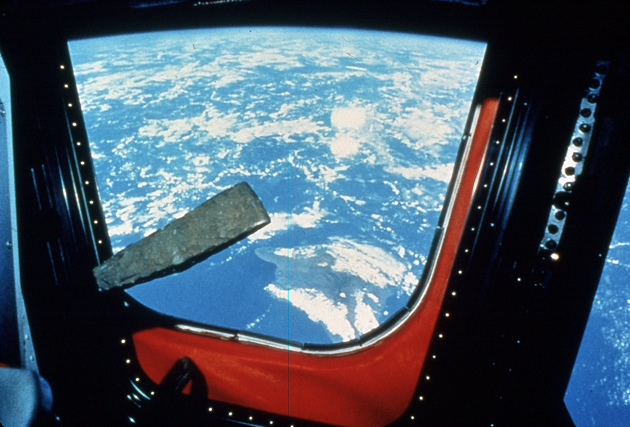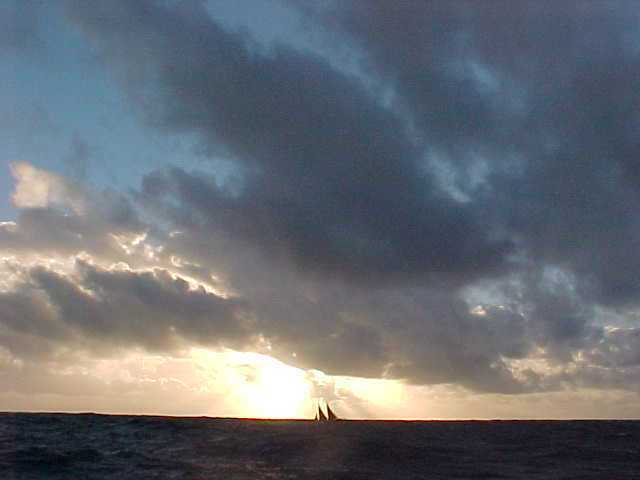Hōkūle‘a’s World Wide Voyage
Vision
The seed for Hōkūle‘a’s World Wide Voyage (WWV) was planted one night after the 1992 voyage to Rarotonga in the Cook Islands. While Nainoa Thompsonwas sailing home on Hōkūle‘a, he had spoken via satellite phone with, Lacy Veach, a NASA astronaut who was orbiting the earth on the space shuttle Columbia. Lacy grew up in Hawai‘i and went to school with Nainoa. Nainoa invited Lacy and two other astronauts to join the Hōkūle‘a crew on the last leg of the 1992 voyage, from Moloka‘i to O‘ahu.
Later, over the Thompson kitchen table, Nainoa’s father, Pinky Thompson, and Lacy shared their visions of Hawai‘i with each other.
Nainoa remembers Lacy's vision: “Lacy was asleep, stuck to the wall with Velcro, when another astronaut woke him up. ‘Come and look out the window. We’re passing over Hawai‘i,’ he said. Lacy looked out the porthole of the shuttle. The sight of the islands took his breath away.” He saw the islands and the planet in one vision – that planet earth was just an island like Hawai‘i, in an ocean of space, and that we needed to take care of them both if the planet was to remain a life-giving home for humanity.

Lacy took a adze stone with him on the space shuttle Columbia in 1992 and photographed it floating in space above the Big Island of Hawai‘i.
Pinky’s vision was from his vantage point of the Hawaiian Islands. Both Pinky and Nainoa shared the assessment that Hawai‘i was heading toward an unsustainable future. That night Pinky said if the knowledge and values that served Hawaiians were truly strong and inspirational, having enabled them to care for Hawai‘i and her seas for nearly 2,000 years through the careful management of natural resources to sustain a large, healthy population, we should go and share the knowledge and values with the world.
From Lacy’s and Pinky’s visions emerged a single vision of sailing Hōkūle‘a around the world – to share her values and practices for caring for our islands and to learn from others what they are doing. Pinky and Lacy wanted Hōkūle‘a to bridge the communities and cultures of caring and bring them together in our effort to navigate toward a sustainable future.
During the 2007 voyage to Micronesia and Japan, the leadership on the canoe witnessed how successful Hōkūle‘a was in crossing cultural boundaries and inspiring people outside of Hawai‘i and Polynesia with hope. They again raised the vision of sailing Hokule‘a around the world to share the canoe with everyone who wanted to find a way to mālama the earth and her people.
The WWV mission is aligned with the responsiblity given to Kalepa Baybayan, “Shorty” Bertelmann, Bruce Blankenfeld,‘Onohi Paishon, and Nainoa Thompson, the five initiated as Pwo navigators by Mau Piailug during the 2007 voyage to Satawal: the navigators must continue to sail in order to bring home gifts to benefit our islands.
Thus, the foundation for the Worldwide Voyage was established.

